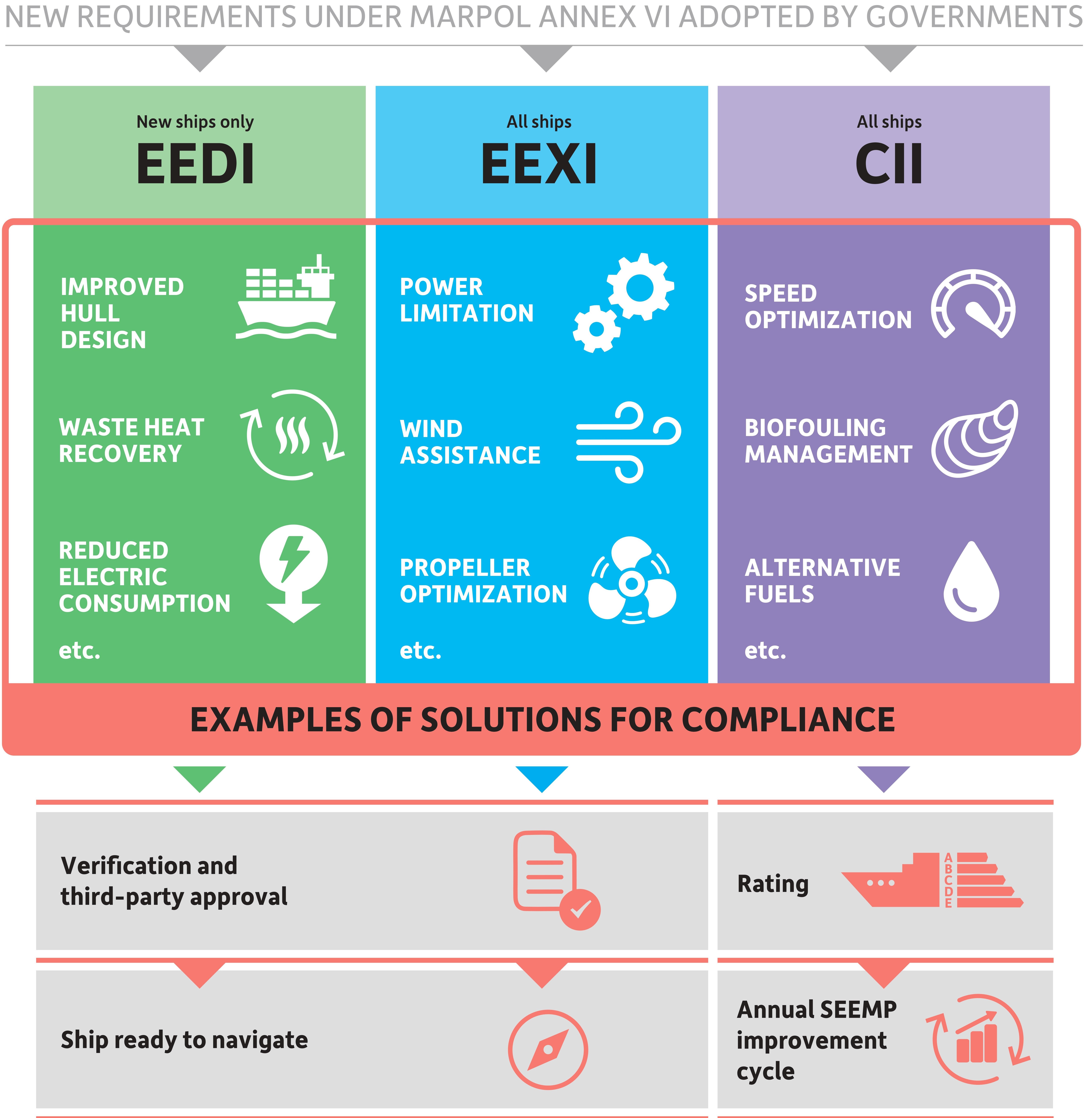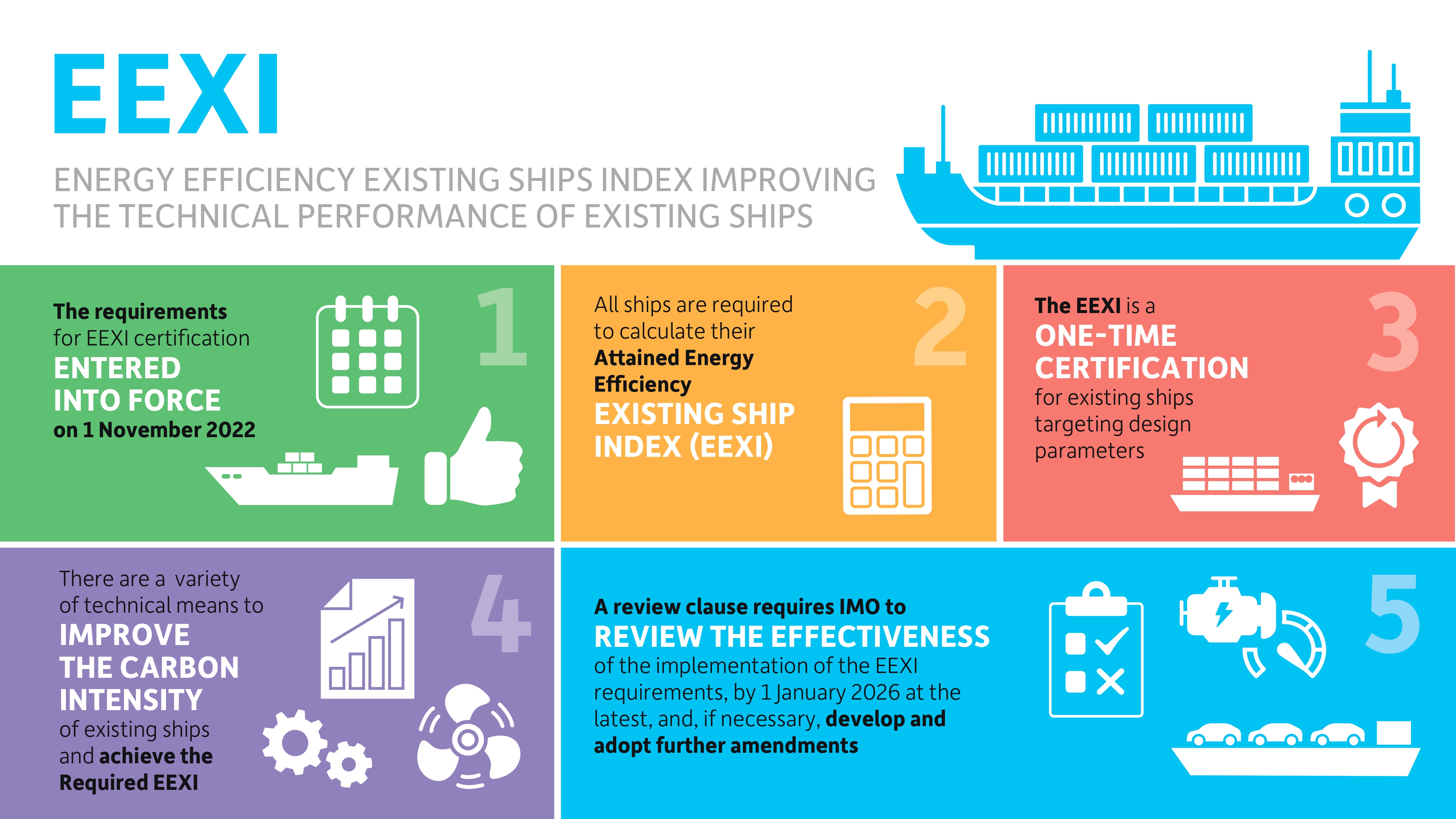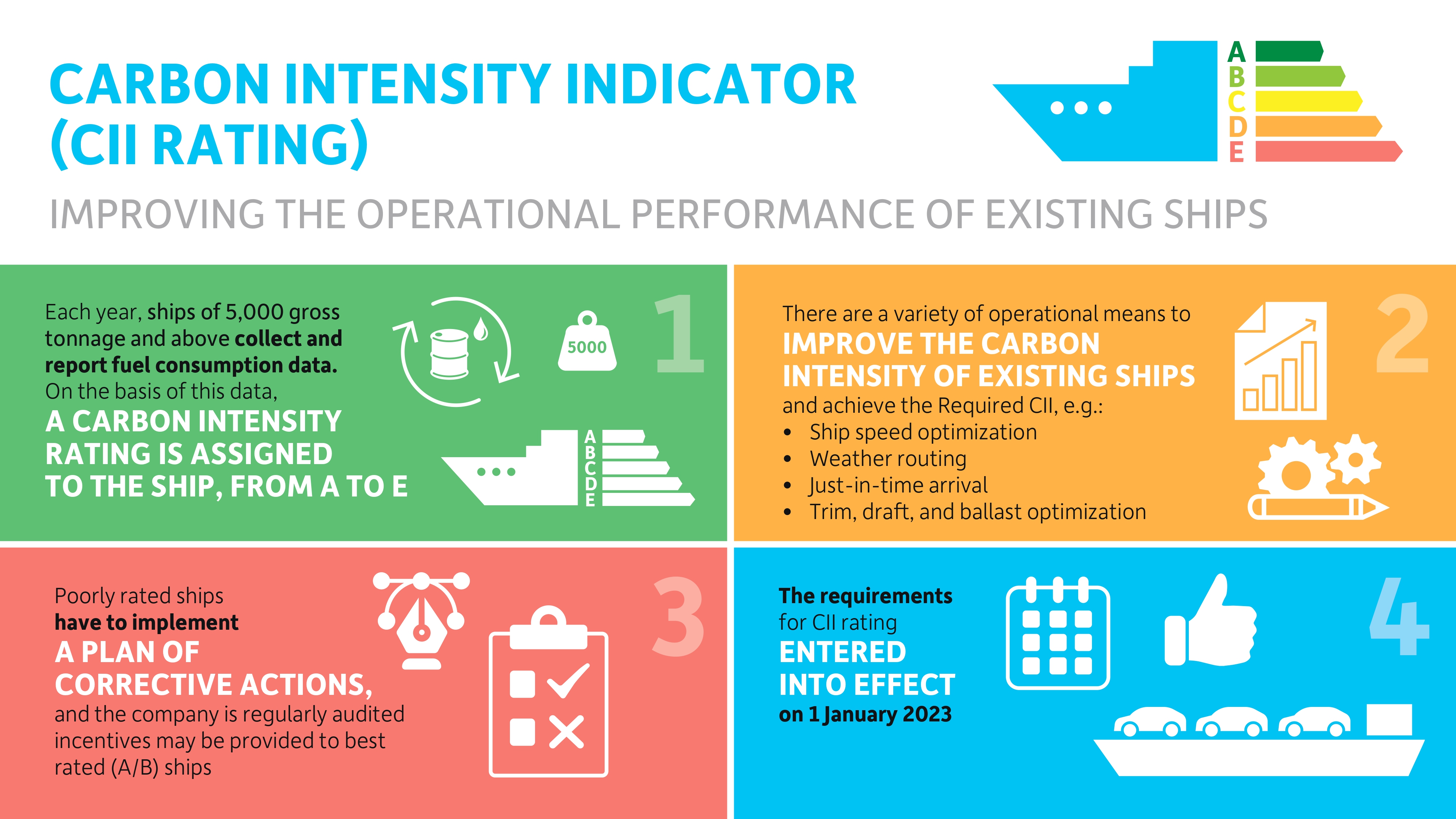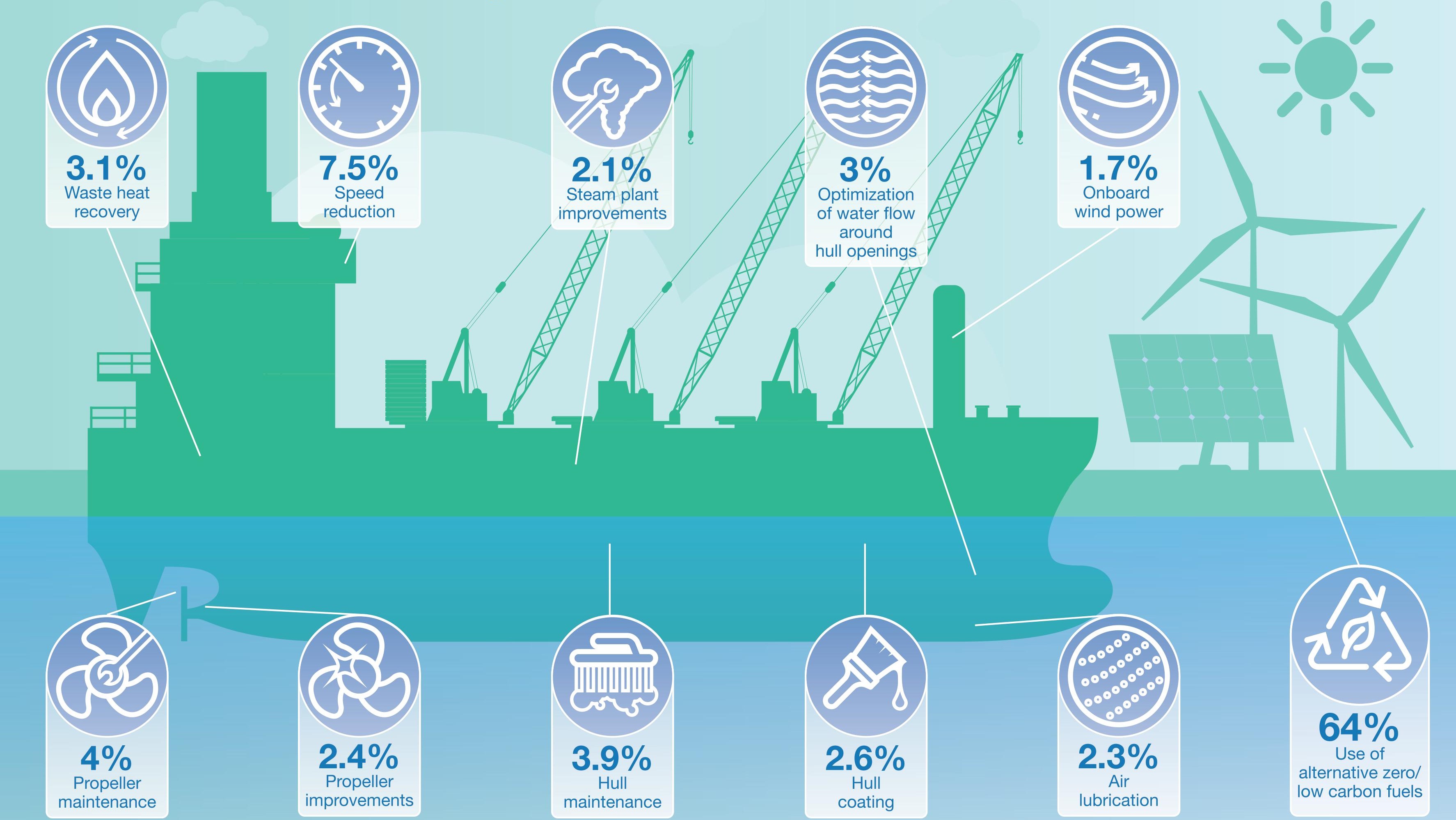Short-term GHG reduction measure
In line with the pace of work set by the Initial IMO Strategy, and in order to achieve its ambitions, MEPC 76 adopted in June 2021 a short-term GHG reduction measure via amendments to MARPOL Annex VI. The measure consists of combined mandatory technical and operational requirements which entered into force in November 2022 and is aimed at reducing the carbon intensity of international shipping in 2030 by at least 40%, compared to 2008 levels. IMO regulation drives innovation to reduce the carbon intensity of international shipping |  |
The technical approach
Starting from 1 January 2023, all ships of 400 GT and above are required to calculate their Energy Efficiency Existing Ship Index (EEXI) and to implement technical means to improve their energy efficiency. Ships are required to meet a specific required EEXI which is based on a required reduction factor (expressed as a percentage relative to the baseline) equivalent to EEDI phase 2 or 3 for new ships, thus creating a level playing field between new and existing ships.

The operational approach
Starting also from 1 January 2023, all ships of 5,000 GT and above are required to calculate and report their operational Carbon Intensity Indicator (CII) which links the CO2 emissions to the ship's capacity over distance travelled by ships. In 2024, ships will be rated (A, B, C, D, E - where A is the best) against a reference line and required reduction factors, which will be incorporated in their mandatory documentation to be issued by Administrations. The performance level has to be recorded in the ship's Ship Energy Efficiency Management Plan (SEEMP). Ships rated E, or D for three consecutive years, will have to implement a Plan of corrective actions, demonstrating how the required index (C or above) would be achieved. Administrations, port authorities and other stakeholders, as appropriate, are also encouraged to provide incentives to ships rated as A or B.
The IMO carbon intensity rating system is expected to enhance the private sector's involvement in promoting low-carbon shipping. It will allow the financial sector, such as banks and insurance companies, but also charterers and cargo owners to use the mandatory ratings of these ships in a way to steer investment and equity towards the most efficient ships.

Future developments
The effectiveness of the implementation of the CII and EEXI requirements is to be reviewed by 1 January 2026 at the latest. IMO also agreed to keep under review the impacts on States of the measure, paying particular attention to the needs of developing countries, especially Least Developed Countries (LDCs) and Small Island Developing States (SIDS) so that any necessary adjustments can be made.
The short-term measure also provides potential building blocks for future GHG reduction measures to be developed in the mid- and long-term.

Estimated contribution of selected technologies in the total amount of CO2 reduction in shipping